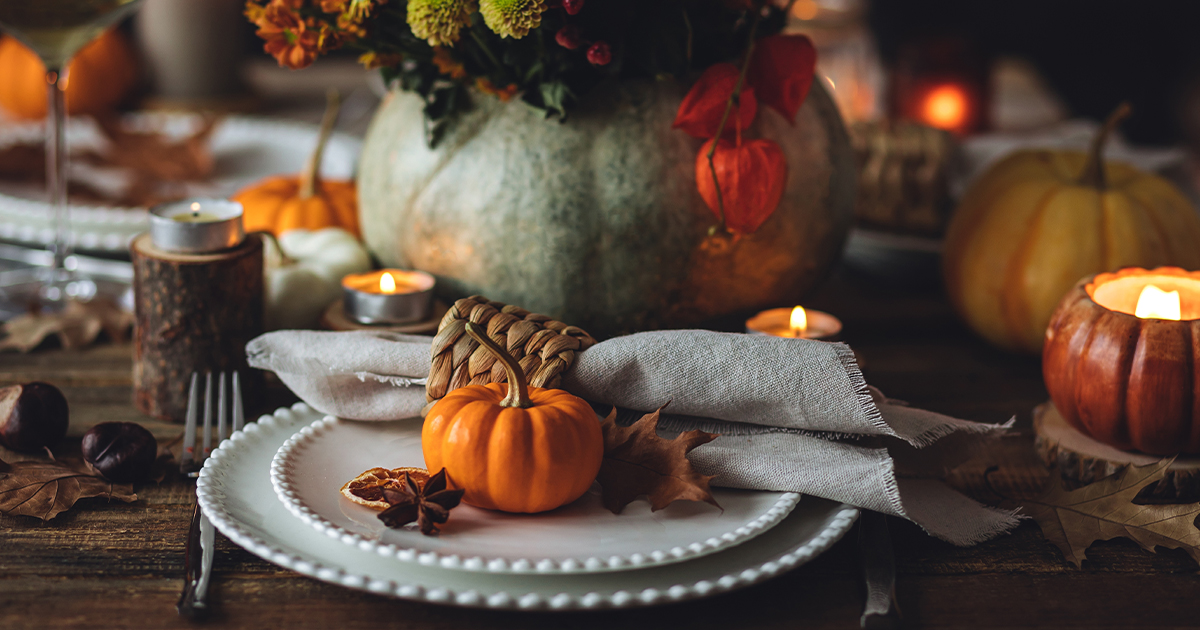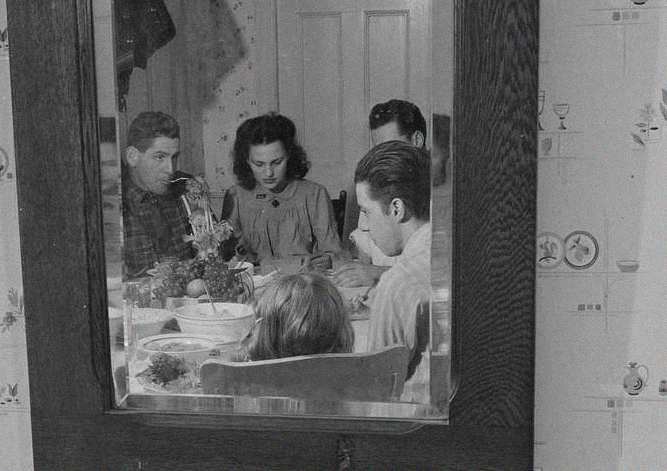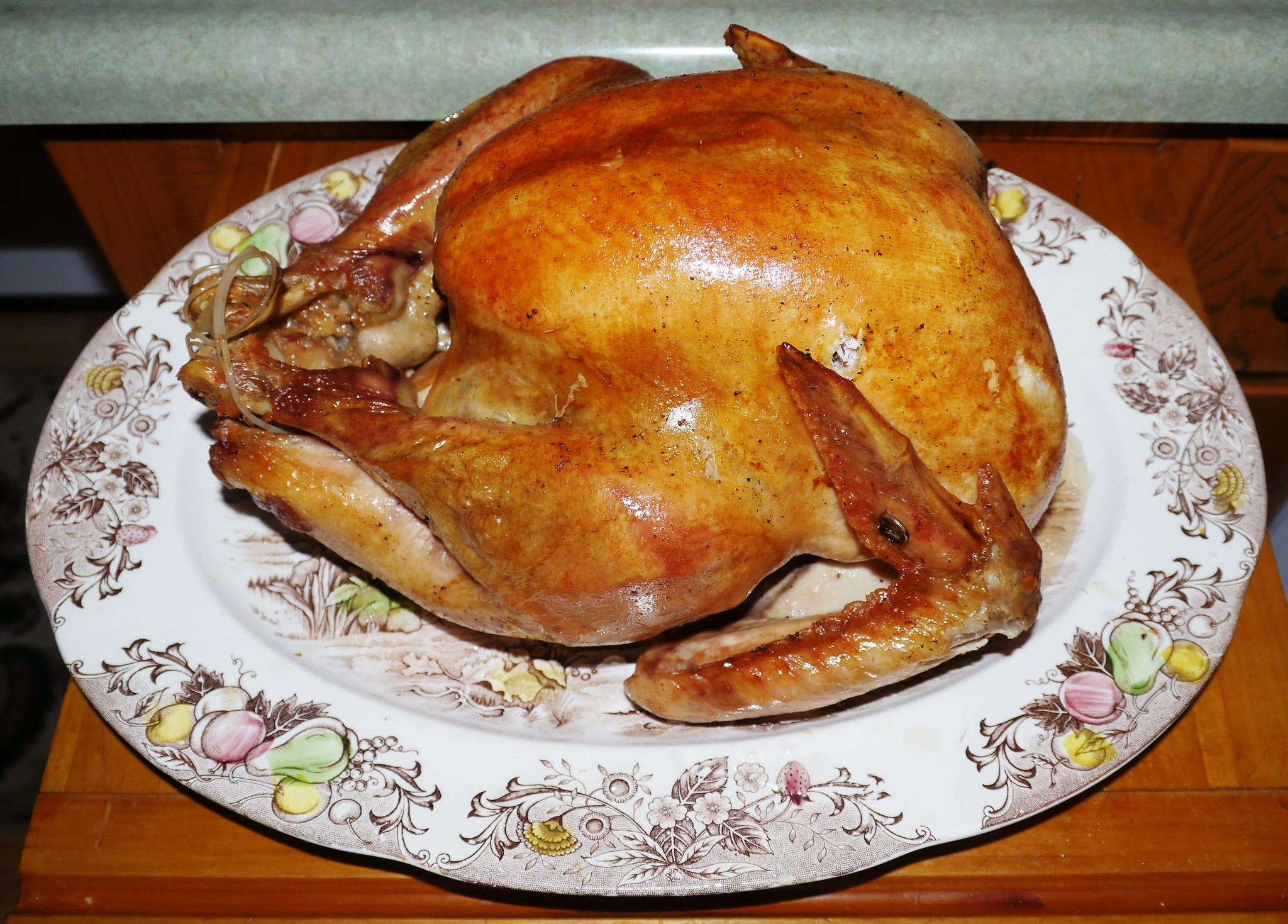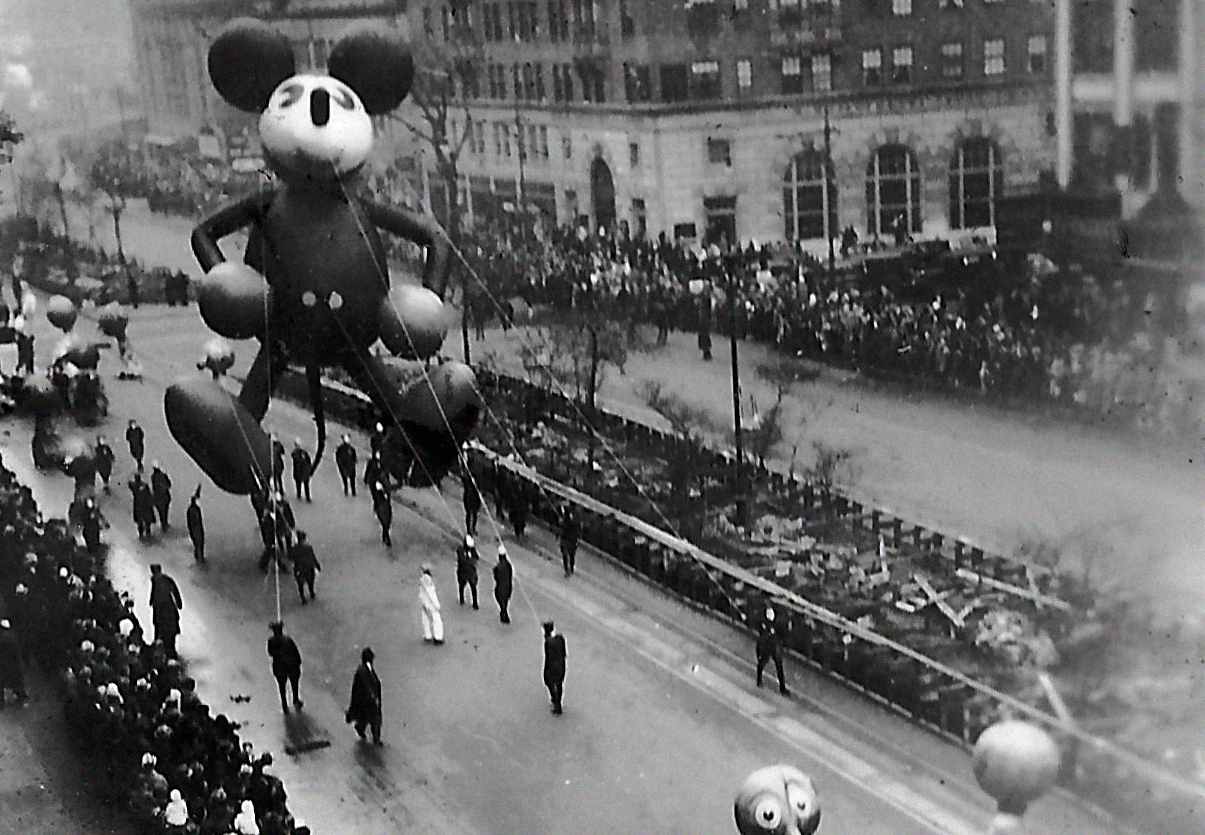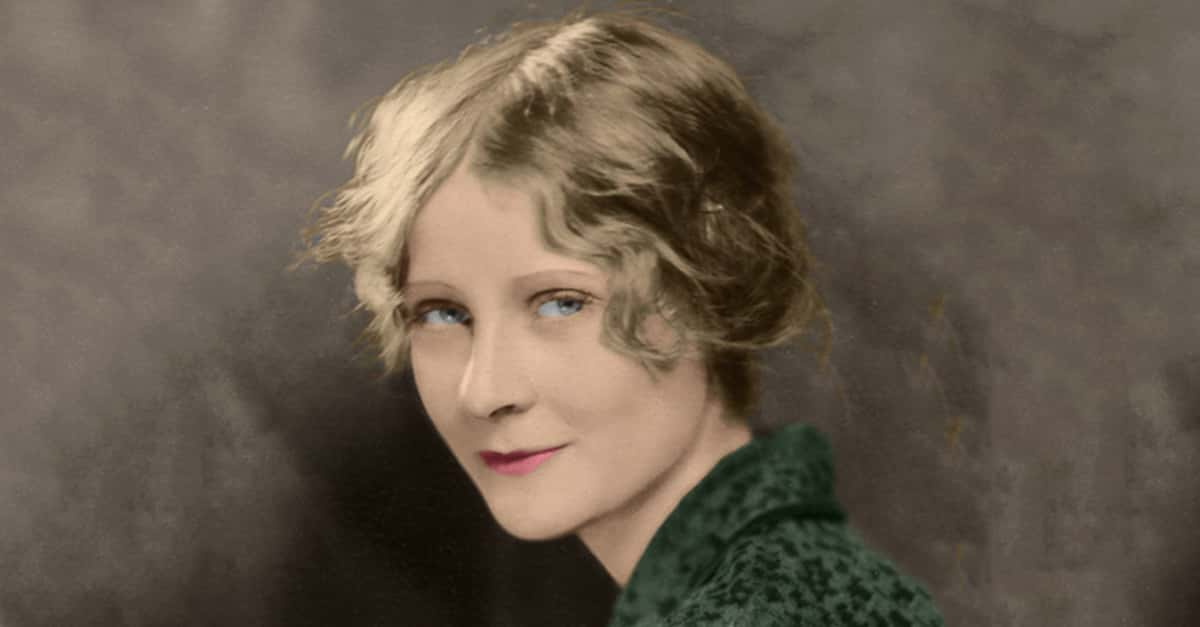How Thanksgiving Has Changed Throughout The Years
Believe it or not, Thanksgiving has actually remained fairly untouched over the last century. From the drinks and menu to the parades and races, this harvest holiday has remained deeply rooted in tradition, dating back as far as the 1600s.
But not everything is the same. True American greed has made its way in—and Thanksgiving today is starting to look a little different.
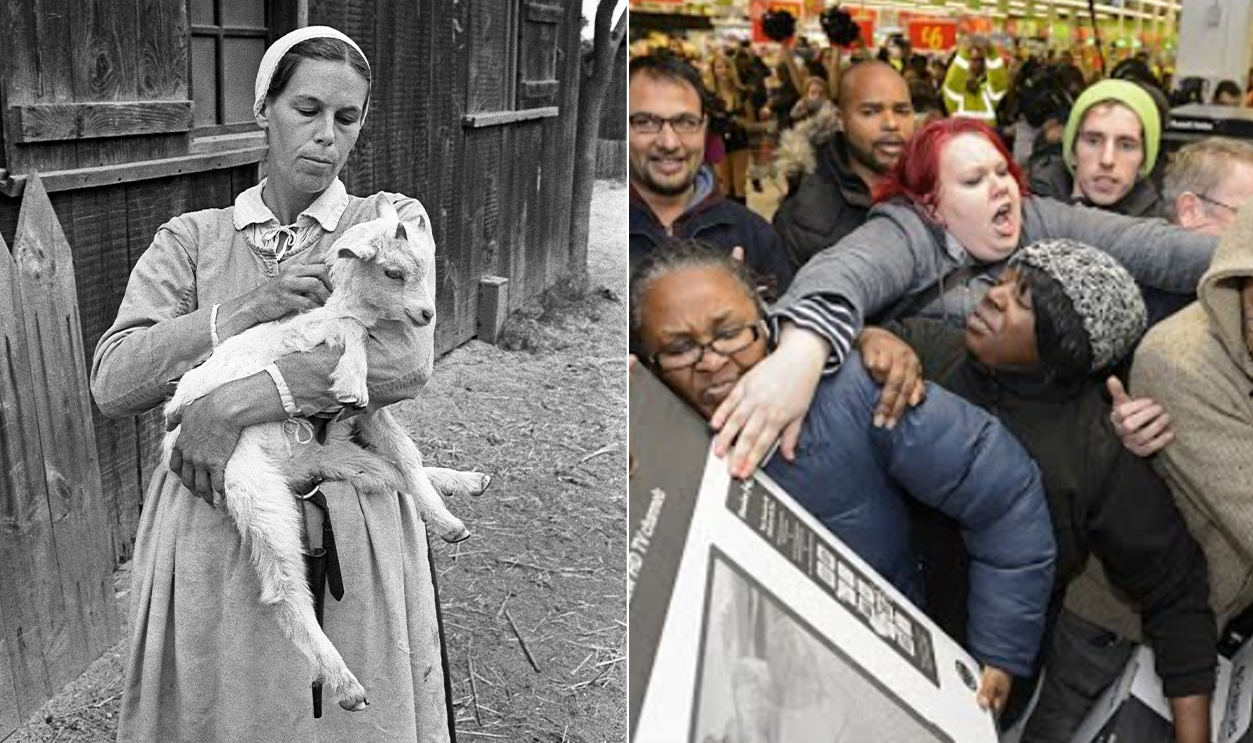
The Historical Feast
In case you don’t already know, Thanksgiving in America is believed to derive from a 1621 harvest feast shared by the English colonists (pilgrims). Over the years, the holiday has become rich in legend and symbolism—with its particular menu at its core.
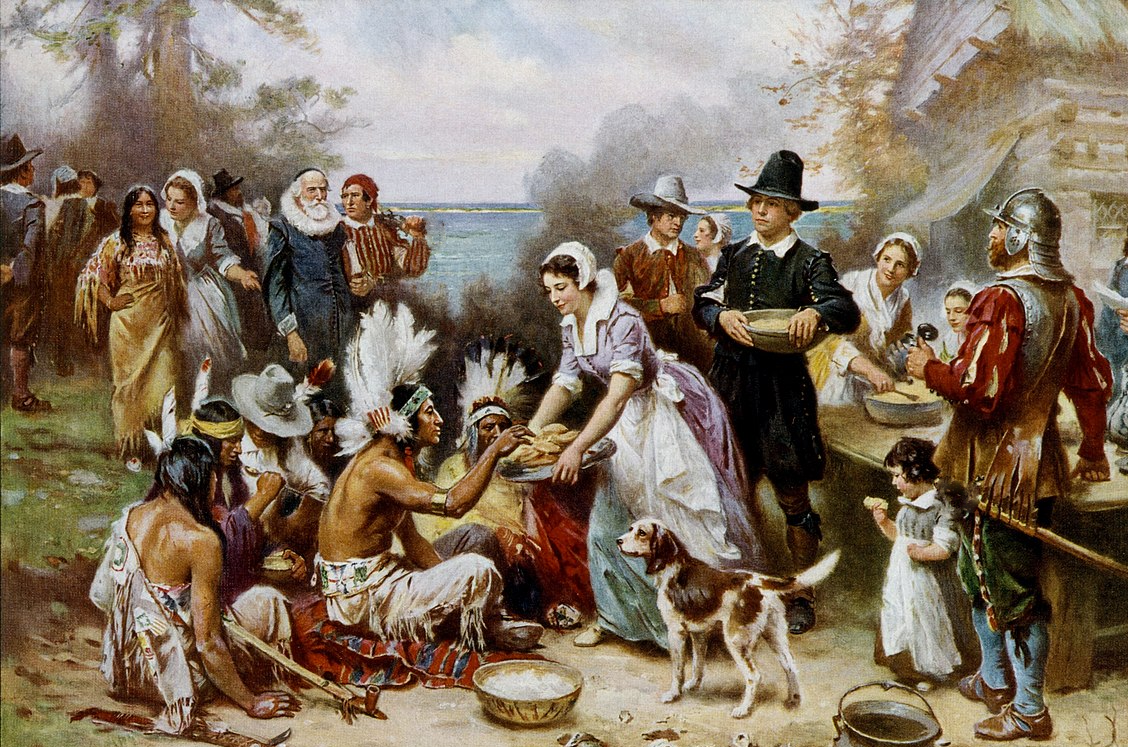 Jean Leon Gerome Ferris, Wikimedia Commons
Jean Leon Gerome Ferris, Wikimedia Commons
Introducing The Bird
The English colonists of Plymouth went out “fowling,” most likely for easy prey like ducks and geese. When they ended up with a lot more than they expected, they decided to save it to eat over the next week or so.
That is, until an unexpected visitor showed up.
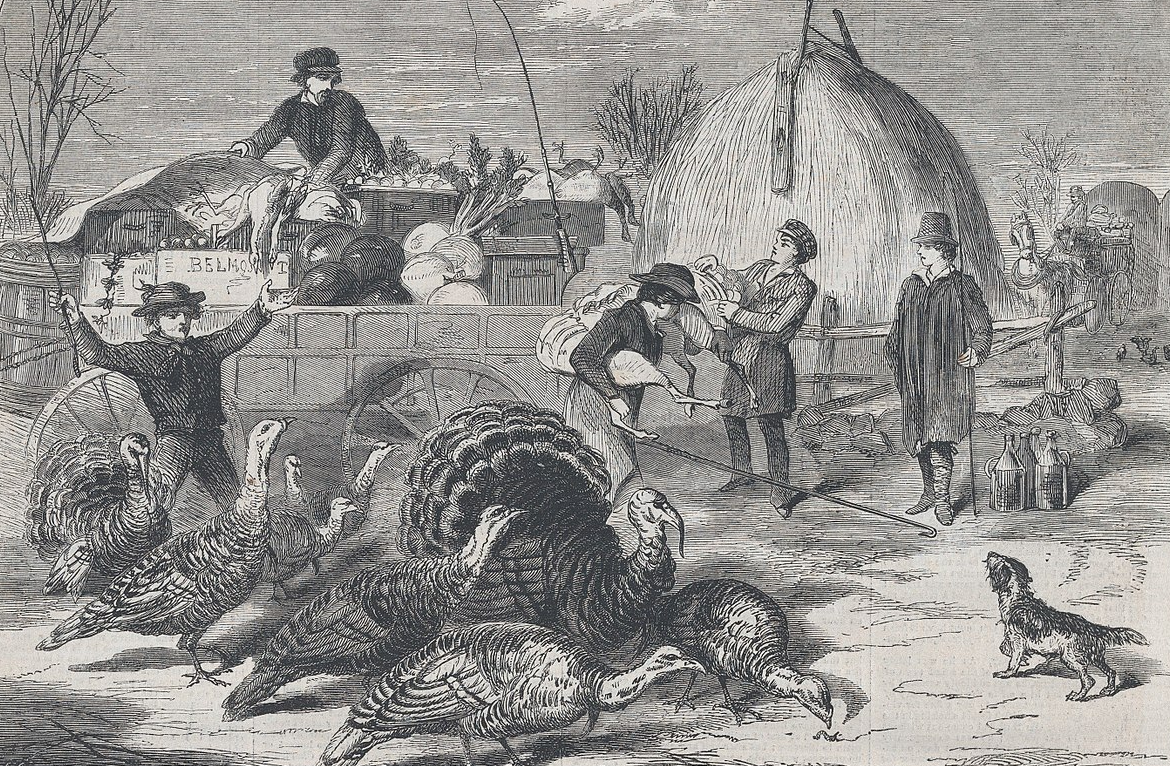 Winslow Homer, CC0, Wikimedia Commons
Winslow Homer, CC0, Wikimedia Commons
The Surprise Guests
Not long after their return from their hunt, the Wampanoag made a surprise appearance at their settlement’s gate. While this was initially unnerving, the two groups ended up socializing over the next few days without incident.
The English cooked up their haul of birds (along with fish, stew, and vegetables), and the Wampanoag contributed venison.
They drank homemade brew, and engaged in a little friendly competitive racing and shooting—much of what you would still find at Thanksgiving gatherings today.
 Jennie Augusta Brownscombe, Wikimedia Commons
Jennie Augusta Brownscombe, Wikimedia Commons
Making It Official
After that, New England colonists were said to be accustomed to celebrating something similar, where they spent a few days in prayer, thanking God for blessings—such as military victory, the end of a drought, and hefty harvests.
It wasn’t until the late 1800s that the government officially recognized the celebration as “Thanksgiving,” and declared it a national holiday to be held each November.
 Winslow Homer, CC0, Wikimedia Commons
Winslow Homer, CC0, Wikimedia Commons
The Cooks
As you may have suspected, the first Thanksgiving dinner was prepared by women, and only women—four of them, to be exact. But in America today, the dinner preparations a little more equal, with 84% of men helping out in some way, and 42% of men cooking the actual turkey.
That's progress, if you ask us.
 GarlandFamily, CC BY-SA 4.0, Wikimedia Commons
GarlandFamily, CC BY-SA 4.0, Wikimedia Commons
The Drinks
If we’re going back a hundred years, the prohibition era was just getting started in 1919, and believe it or not, some of the best cocktails were sneakily created during this time. From Highballs, French 75s, and Sidecars, many of them are still consumed today.
But back then, how and when they drank was imperative.
 Marjory Collins, Wikimedia Commons
Marjory Collins, Wikimedia Commons
Prohibition Didn't Stop Anyone
During a time of dry drinks only, you may not have found these fancy cocktails around the Thanksgiving table. Instead, Americans would drink them later on in the evening—on the sly, and only with trustworthy guests.
Today, many Americans start drinking as early as noon, and like to enjoy a few glasses of vino as they cook.
The Menu
Today, about 88% of Americans eat turkey on Thanksgiving Day—but that wasn’t always the main dish. According to historians, way back in 1621, the main dish on Thanksgiving was actually deer or fowl (which adds up with the quick history lesson earlier).
Turkey didn’t become the signature dish until a famous writer took it upon herself to make it happen.
 Winslow Homer, CC0, Wikimedia Commons
Winslow Homer, CC0, Wikimedia Commons

History's most fascinating stories and darkest secrets, delivered to your inbox daily.
The Turkey
Writer Sarah Josepha Hale (author of “Mary Had a Little Lamb”) has been credited for introducing turkey as the Thanksgiving main.
She campaigned heavily for Thanksgiving to become a national holiday and even included an entire chapter on turkey as the main dish in her book Northwood: A Tale of New England in 1827.
After that, it was always turkey. But what about the sides?
The Side Dishes
Thanksgiving side dishes have remained mostly unchanged. A menu written in 1919 that has been passed down for generations listed many delicious Thanksgiving sides that are still typical for today, including mashed potatoes, a cranberry dish, creamed cauliflower, and even pumpkin pie.
However, modern recipes have been added—and we aren’t complaining.
 Ben Franske, CC BY-SA 4.0, Wikimedia Commons
Ben Franske, CC BY-SA 4.0, Wikimedia Commons
True American Diversity
In some northern states, like Minnesota, you might find turkey stuffed with rice. And in New Mexico, some people enjoy adding chili to stuffing.
And of course, if you visit the East Coast for Thanksgiving, you may enjoy crab dishes as an appetizer or used in the main meal.
Washington residents apparently enjoy adding locally grown walnuts to stuffing and desserts, and in Indiana, a popular dessert choice is persimmon pudding.
Adding personal flare to traditional dishes is the best kind of glow-up for Thanksgiving dinner.
The Crowd
Traditionally, Thanksgiving celebrations included as many people as possible. Friends and family would gather from near and far, each contributing dishes, drinks, or activities to take part in. Together, they would give thanks for bountiful harvests and the health of the family.
Today, though, big family gatherings can be challenging to plan—leading to a more modern amendment.
 Yuganov Konstantin, Shutterstock
Yuganov Konstantin, Shutterstock
Friendsgiving
It can be tough to narrow down exactly when “Friendsgiving” became a thing, but some say it may have become more popular in 2008, when the economy took a nosedive and millennials couldn’t afford plane tickets to go home for the holiday.
Instead, they’d get together locally with groups of friends, where they’d all pitch in and spend the holiday together.
That’s not the only theory of its origin, though.
Who Put The "Friends" In Friendsgiving?
Others believe Friendsgiving was introduced by the popular TV series, Friends—whose character’s celebrated the holiday together instead of with their families. Either way, the term was officially added to the dictionary in 2009.
Today, Friendsgiving doesn’t always take place on Thanksgiving. Some people dedicate a different date, or a different weekend—whenever their friends are available.
But the traditions are generally kept the same—food, drink, and football.
 Warner Bros., Friends (1994-2004)
Warner Bros., Friends (1994-2004)
Football
The first official Thanksgiving NFL game took place between the Detroit Lions and the Chicago Bears in 1934—but that wasn’t the first time the game had been played on the holiday.
Playing football on Thanksgiving has been a thing since way back in 1869, where families made it a tradition to pass time while dinner was cooking.
Since 2006, this day has turned into a triple-game day with more than 30 million viewers. But some Americans prefer to be more actively involved in a sport, rather than watch it.
Turkey Trots
While Thanksgiving is associated mostly with food, it’s also a popular day to run in a race. Thanksgiving 5Ks, also known as “turkey trots,” have been around for centuries, dating back to 1896. Back then, the Buffalo YMCA hosted their first holiday 8K.
Today, more than 14,000 people will run in more than 1,000 turkey trots across the US. But that’s nothing compared to the millions of people who attend something else on Thanksgiving.
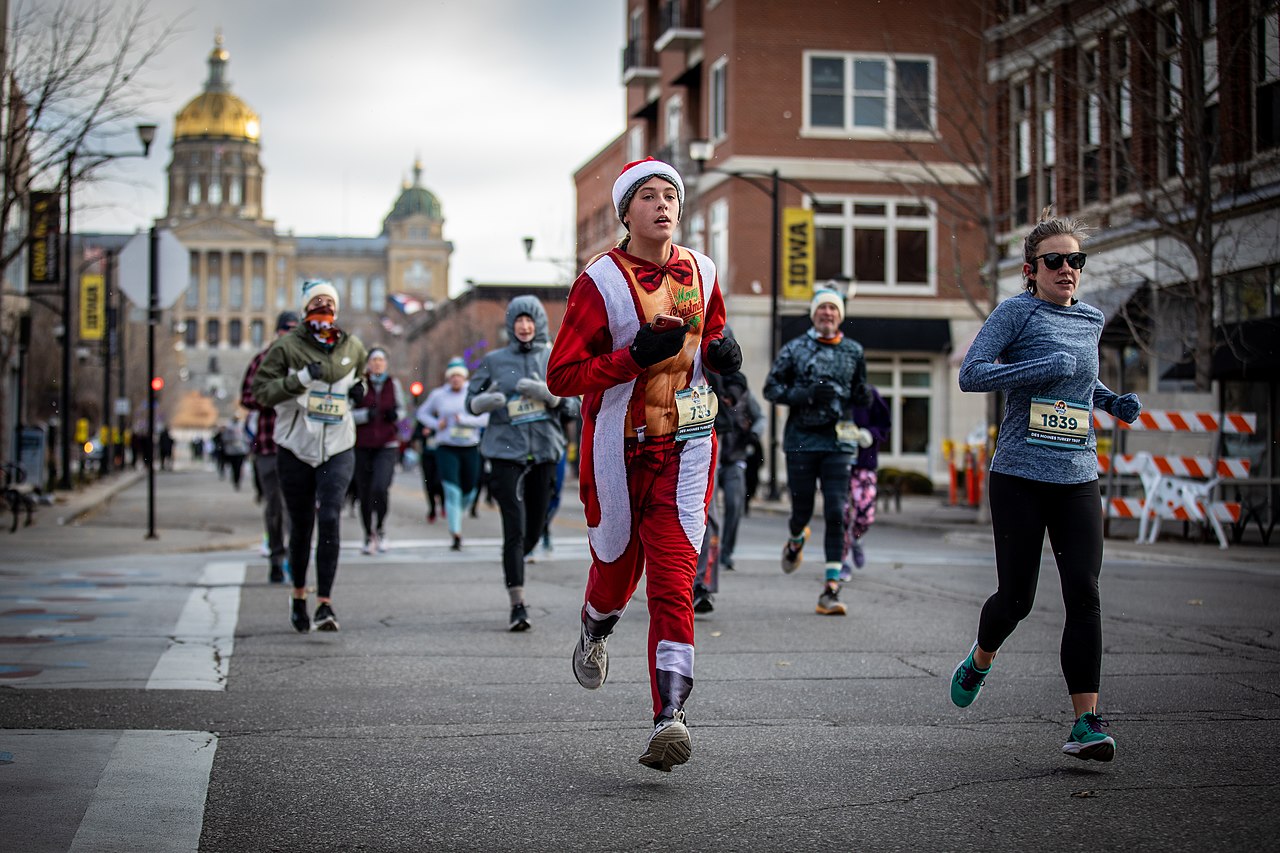 Phil Roeder, CC BY 2.0, Wikimedia Commons
Phil Roeder, CC BY 2.0, Wikimedia Commons
The First Parade
America’s Thanksgiving parade has been a holiday tradition in Detroit for more than 80 years. It was started by Hudson’s—downtown Detroit’s legendary department store—with the first parade rolling down Woodward Avenue in 1924.
That same year, Macy’s began a parade in New York City.
The Parades Today
Over the years, the parade has grown significantly in size—with more floats, more participants, and certainly more attendees. The first parade featured horses pulling a float decorated with Mother Goose, four papier-mâché heads, and seven marching bands.
Today, millions of fans line the streets for over two miles to watch countless floats, bands, and groups parade down the street. Local businesses join in by handing out candy, coupons, and free goods.
But the excitement doesn’t stop there.
 Anthony Quintano, CC BY 2.0, Wikimedia Commons
Anthony Quintano, CC BY 2.0, Wikimedia Commons
New Age Thanksgiving Traditions
History gave us massive feasts, delicious drinks, family gatherings, parades, races, and sports. So, how could the modern world possibly contribute?
Well, good old American greed has kicked in. And we are now indulging in more dark ways than one.
 Anthony Quintano, CC BY 2.0, Wikimedia Commons
Anthony Quintano, CC BY 2.0, Wikimedia Commons
Shopping
If food, friends, and parades aren’t enough, American Thanksgiving has become known for shopping, too. Now, this tradition doesn’t date back quite as far as the others, and depending on who you ask, not all believe this one is a step in the right direction.
The retail bonanza known as Black Friday has recently become an integral part of the holiday tradition—but few know its dark history.
 Diariocritico de Venezuela, Flickr
Diariocritico de Venezuela, Flickr
The Original Black Friday
The first recorded use of the term “Black Friday” occurred back in 1869. It wasn’t actually applied to Thanksgiving holiday shopping, but to the financial crisis of the US gold market.
Two wealthy financiers bought as much of the gold as possible, hoping to sell for astonishing profits—but it didn’t go as planned.
The Original Black Friday
The conspiracy was unraveled, and on that Friday in September, the stock market was sent into a free fall, and bankrupted everyone from Wall Street barons to farmers—sending the nation into darkness. Hence, Black Friday.
But that’s not the most commonly repeated story behind the shopping tradition.
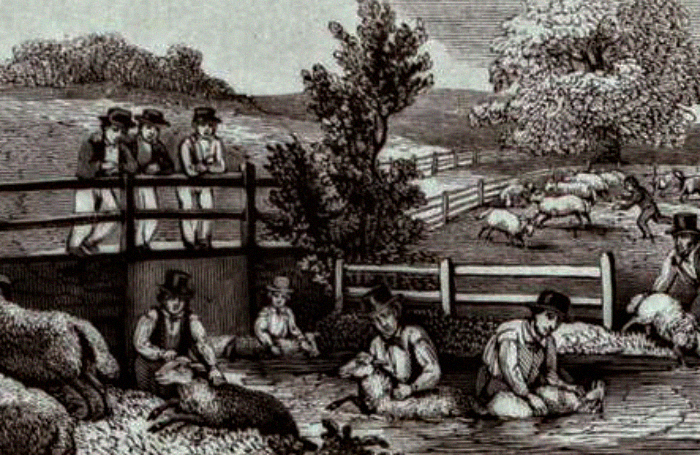 New York Public Library, Picryl
New York Public Library, Picryl
Black Friday For Retailers
The most common story links Black Friday to retailers. Apparently, after an entire year of operating “in the red” (at a loss), stores would supposedly go “into the black” (earn a profit) on the day after Thanksgiving due to shoppers blowing money on discounted merchandise.
But while this may be the most typically told version, the truth is so much darker.
 Diariocritico de Venezuela, Flickr
Diariocritico de Venezuela, Flickr
The Common Explanation Of Black Friday
Back in the 1950s, authorities in Philadelphia used the term to describe chaos that ensued the day after Thanksgiving, when crowds of suburban shoppers flooded the city prior to the big Army-Navy football game that was held on that Saturday every year.
But why it’s called black Friday is even more interesting.
The Common Explanation Of Black Friday
Apparently, officers had to work long, exhaustive shifts, including night shifts due to traffic, crowd control, and an influx in shoplifters—leading some to believe the long, dark night to play a role in the name.
Over the years, retailers found a way to make it work for their advantage, offering discounts and deals to draw more people in. People line up for days before the sales start, making law enforcement step up earlier than before.
And while they were certainly raking in the dough, retailers didn't expect what happened next.
 bobjgalindo, CC BY-SA 3.0, Wikimedia Commons
bobjgalindo, CC BY-SA 3.0, Wikimedia Commons
Black Friday Madness
Some retailers have deals so good that people are willing to kill for them—literally. According to Hustle, between 2006 and 2018, 44 Black Friday incidents in America left 11 dead and 109 injured.
Shoppers are known to be ruthless when a deal is too good to pass up. And the stores are willing to put up with it simply because of the insane profit they know is coming their way.
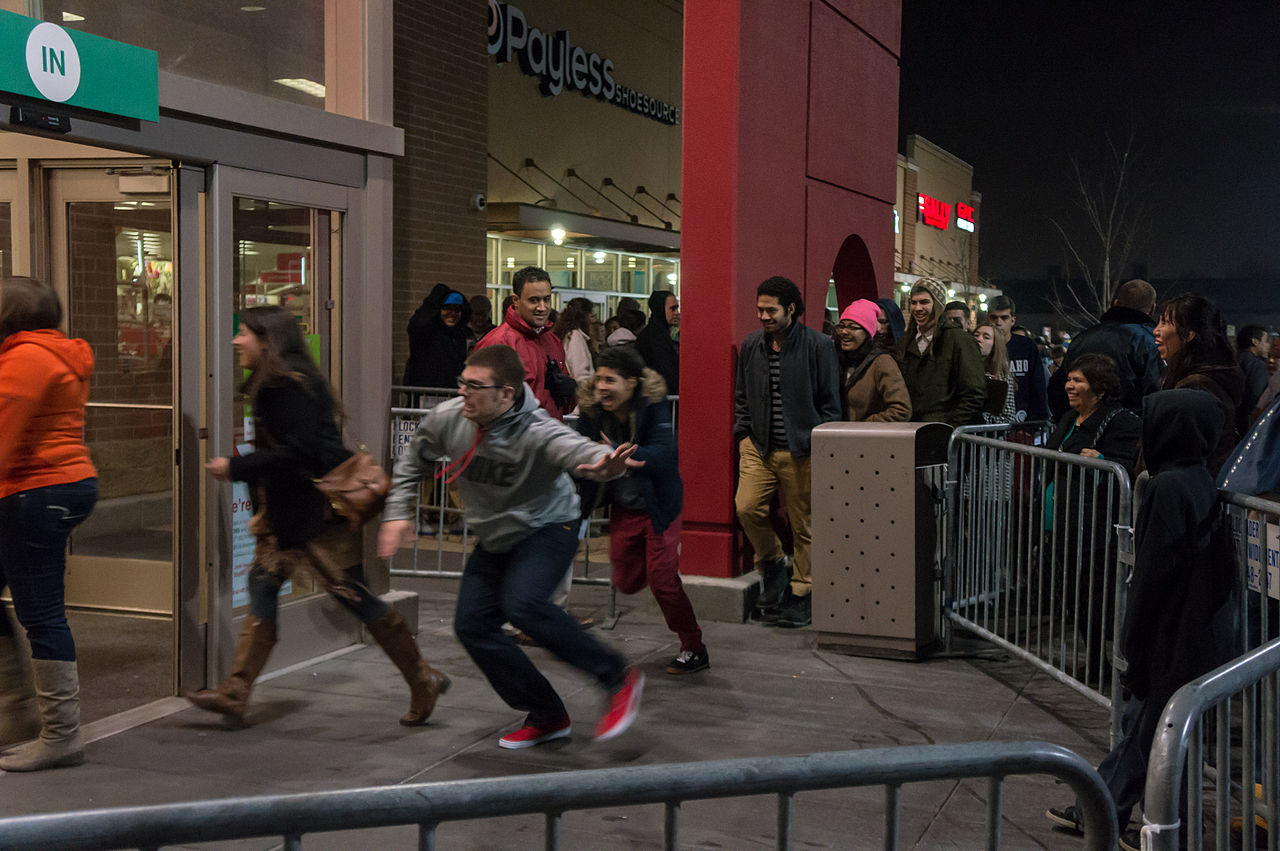 Powhusku, CC BY-SA 2.0, Wikimedia Commons
Powhusku, CC BY-SA 2.0, Wikimedia Commons
Black Friday Profits
According to Digital Trends, in 2018, while a handful of people lost their lives in parking lot brawls, stores raked in a whopping $6.2 billion—in a single day.
And then, after Black Friday was a thing, along came Blackout Wednesday. And while this one isn’t shopping related, it also has grim consequences.
Blackout Wednesday
Now that we are no longer in the prohibition era, and given that most Americans don’t work on Thanksgiving, the day before has become a day to celebrate as well.
The night before Thanksgiving has become a night of binge drinking—and sadly, it’s not always enjoyed responsibly.
Blackout Wednesday
Blackout Wednesday became a thing back in 2006. Since then, Mothers Against Drunk Driving (MADD) recognizes it as the deadliest holiday of the year because of an increased number of too-tipsy drivers on the road. MADD even partnered with Uber last year to offer free rides on Thanksgiving Eve in Massachusetts and Rhode Island.
So, now we’ve added a day before and a day after—what else are we missing?
Cyber Monday
Black Friday has been incredibly successful from a profit perspective. So, naturally, retailers had to push the limit a little further.
In 2005, the National Retail Federation noted that consumers generally flocked online after Thanksgiving to do their shopping—so in order to maximize profits, they rolled with it and introduced Cyber Monday.
Cyber Monday
The Monday following Thanksgiving boasts an array of online shopping deals, in case you wanted to avoid getting seriously injured on Black Friday.
But new generations say we’re still missing something on the days in between.
 Jirapong Manustrong, Shutterstock
Jirapong Manustrong, Shutterstock
Just Keep Eating
Okay, so this might not actually be a thing yet—but it’s not completely unheard of. Since we start drinking on Wednesday, eating on Thursday, and shopping on Friday—what should we do with Saturday and Sunday?
People these days are always looking for an excuse to party, so why not put those leftovers to good use and throw a leftover party?
Leftover Parties
People are now inviting friends, neighbors, or family over for a Thanksgiving picnic or brunch featuring reheated leftovers and fresh salad bars.
Of course, lots of people just continue drinking, eating, and shopping all weekend long anyway. With the way the world is going today, why not celebrate as often as we can?
What Thanksgiving traditions are your favorite?

